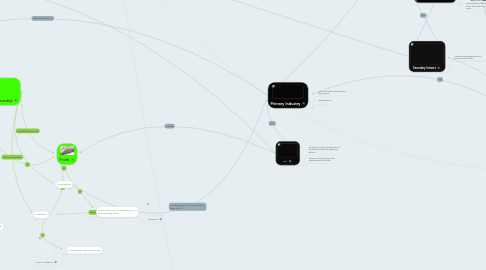Production
저자: Parth Patel


1. Economic Resources
2. Entrepreneurship
2.1. The imagination to see how any idea can work and the forsight to see the possibility of making a profit
3. Labour
3.1. Human Resources
4. Land
4.1. Natural Resources
4.2. Mainly anything extracted from the earth
5. Capital
5.1. A good produced in order to produce something efficiently
6. The Learning Curve
6.1. Is a Tool for measuring the effectiveness of experience on efficiency
7. Risk taking
8. Innovation
9. Invention
10. Creating a NEW Concept
10.1. The First Cellphone
11. Improving on or adapting on a pre-exising idea
11.1. The iPhone
12. Profit
13. Wages & Salaries
13.1. Depending on Where and What you do
14. Quantity
14.1. All the people avalible and able to work (LFpop)
14.1.1. these people are able and available to work
14.2. Anyone who isn't 15+ is not in the LFpop
14.2.1. but little billy here cannot
15. Quality
15.1. Education
15.2. Motivation
15.3. Health
15.4. etc.
16. Labor Force
16.1. Employed+Unemployed workers =
17. Employed: People who have a job or work
17.1. Thsi ear more jobs opened up
17.2. Part time jobs decreased and Full time increased
18. Unemployed: people who do not have a job however are searching for/want one
18.1. Grandpa Sam here wouldn't be unemployed as he retired and doesn't want a job no more
19. Unemployment rate
19.1. The number of people Unemployed/the labor force =
19.2. The unemployment rate in Canada = 6.8%
19.2.1. more jobs came this year but more people are unemployed
19.2.2. 1% of people found jobs but 0.2% didn't
20. 25%
21. Rent
22. Minerals
22.1. Precious Gems
22.2. Iron
22.3. steel
22.4. coal
22.5. zinc
22.6. etc.
23. Water
23.1. Lakes
23.2. Rivers
23.3. etc.
24. Animals
25. Forests
25.1. Wood
25.2. Fruit
25.3. etc,
26. Fixed
27. Scarcity
28. Advancements
29. Technological Breakthroughs
29.1. which is caused by the innovation and creation of new ideas which started to commence during the industrial revolution (in the 1800s)
30. Investments
30.1. But with each future investment in capital goods possible future consumption is increased
31. Consumer goods
32. Economic level/system
32.1. a subsistence level economy can spare very few resources for capital good production
32.1.1. THUS THE GAP BETWEEN POOR AND RICH WIDENS
33. Future Growth
33.1. however it requires a sacrifice of present consumption
34. Increased Productivity
35. Trade
36. Surpuls
36.1. the amount by which the value of a country's exports exceeds the cost of its imports.
37. Deficit
37.1. the amount by which the cost of a country's imports exceeds the value of its exports
38. GDP
39. Safety
39.1. Dangerous and boring jobs are being eliminated
39.2. I.E BOMB DISPOSAL
39.3. The Learning Curve
40. Oconcept: behind the learning curve practice increases efficiency"practice makes Perfect"
41. Example
41.1. an 80% learning Curve
41.2. As a Cumulative quantities of production doubles average time per unit may fall to only 80%of the previous time
42. As Production Quantities increase, average time per unit starts to decrease
43. Specialization
43.1. A new Way Of Doing Things
44. 2 Typles
45. Geographical Specialization
45.1. Varying land usage depending on topographical conditions
45.2. Canada is suited to grow specific items(wheat,woll,etc.)
46. Labor Specialization
46.1. Achieved when the production process is broken down into tiny tasks
46.2. E.g. Building a car
46.3. Referred to as the division of labour
47. Advantages Of Specialization
48. Time Efficiency
48.1. reduced time in training because the task has been simplified
48.2. only have to teach someone to screw in a part rather than teach the person how to make the whole car
49. Practice Makes Perfect
49.1. after screwing that part in over 100 times you should know more efficient/best ways of doing it
50. Disadvantages of Specialization
51. Higher Standard of Living
52. Loss In Quality
52.1. because of the creating habits motivation, quantity may fall while absenteeism rises
52.1.1. E.G. if you do a math question 100 times you will start to use shortcuts
53. Dependancy
53.1. Because all tasks make up the chain of production a break in the chain will cause problems all through the chain
53.1.1. if the person in front of you slows down then the whole line has to wait
54. Loss of Flexability
54.1. since their knowledge is limited their tasks cannot be changed easily
54.1.1. A physicist probably doesnt know much about economics
55. High Required Input
55.1. Initially more costly and needs a larger production runs to be profitable
55.1.1. E,G. you need to hire 5 people instead of 1
